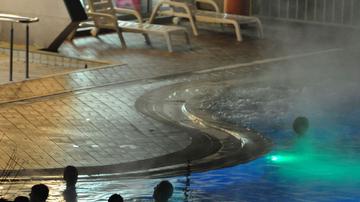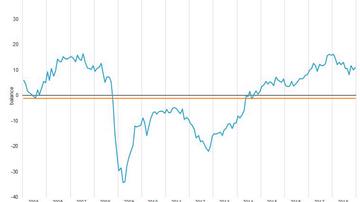
A large part of the world celebrates 1 May as Labour Day. The Second International, an organization of socialist and labour parties, selected this day in 1889 to commemorate the Haymarket affair. Three years prior, on 4 May, a labour demonstration in Chicago turned into a conflict between workers and the police, with casualties on both sides.
In 1948, 1 May was decreed a national holiday on the territory of present-day Slovenia. Especially in Europe, certain pagan traditions are connected with celebrations on 1 May, traditions that have remained despite the changing symbolism of the celebrations. For example, on the eve before 1 May, maypoles are erected and bonfires are lit.
In the socio-economic context, labour is defined as a relationship between the worker and the employer. On this occasion, we highlight certain statistical data involving the mentioned actors in Slovenia.
44% of Slovenia's residents were employed in 2016
In 2016, there were 915,000 persons in employment in Slovenia, 8.1% fewer than in 2008 (996,000). Most persons were employed in manufacturing (230,000), but 11.5% fewer than in 2008 (260,000).
The largest growth of the number of persons in employment in this period occurred in human health and social work activities (21.8%). On the other hand, the largest decline of the number of persons in employment was registered in agriculture, forestry and fishing (45.9%).
In 2016, the ratio of men to women among all employed persons was 53.7% : 46.3%. Mining and quarrying, and construction were activities in which men (more than 90% of employed persons) vastly outnumbered women. Women outnumbered men in human health and social work activities and in education (more than 70% of employed persons).
Slovenia has a below average employment rate among the youth (15–24 years) and the elderly (55–64 years), 3.5 and 16.7 percentage points less than the EU-28 average in 2015, respectively. On the other hand, Slovenian residents aged 25–54 had an above average employment rate (4.9 percentage points higher than the EU-28 average in 2015).
The highest employment rate among the youth (15–24 years) in 2015 was registered in the Netherlands (61.8%) and in the age groups 25–54 years and 55–64 years in Sweden (85.6% and 74.5%, respectively). Greece had the lowest employment rate in all three age groups (13.0%, 64.5% and 34.3%, respectively).
Most labour migrants from the Zasavska region, the fewest from the Osrednjeslovenska region
At the end of 2016, 18.8% of persons in employment commuted to work to other statistical regions and 51.8% commuted to other municipalities.
The Zasavska region had the largest share of labour migrants at the end of 2016. 50.3% of its persons in employment worked in other statistical regions, 11.6 percentage points more than at the end of 2009. The Osrednjeslovenska region employed the most of its residents; only 8.9% of its persons in employment worked outside the region.
In Slovenia, the minimum wage is determined by law. On 1 January 2017, the gross minimum wage was set at EUR 804.96 after it had amounted to EUR 790.73 in the previous two years.
Average monthly labour costs per person in paid employment in 2015 amounted to EUR 2,129.81, which was 11.1% more than in 2008 (EUR 1,916.23).
In 2015, the tax burden on labour costs in Slovenia accounted for 38.6% of total labour costs.
Net incomes of persons who were single by status increased by 10.3% of gross earnings at moving from unemployment to employment. Thus the tax burden of such a person (termed also the unemployment trap, describing the tax burden at moving from unemployment to employment for a single person) amounted to 89.7% of gross earnings.
At moving to a higher paid job for a single person, net incomes of such a person increased by 51.6% of gross earnings. Thus the tax burden at moving to a higher paid job for a single person (termed also a low wage trap) amounted to 48.4%.
There were 191,863 enterprises registered in Slovenia in 2015. They employed 837,454 persons and generated EUR 95.3 billion of turnover. Compared to 2008, there were 25.8% more enterprises registered in 2015. Enterprises employed 5% fewer persons and generated 0.5% less turnover.
Matic Škrinjar, Statistical Office of the Republic of Slovenia

































































